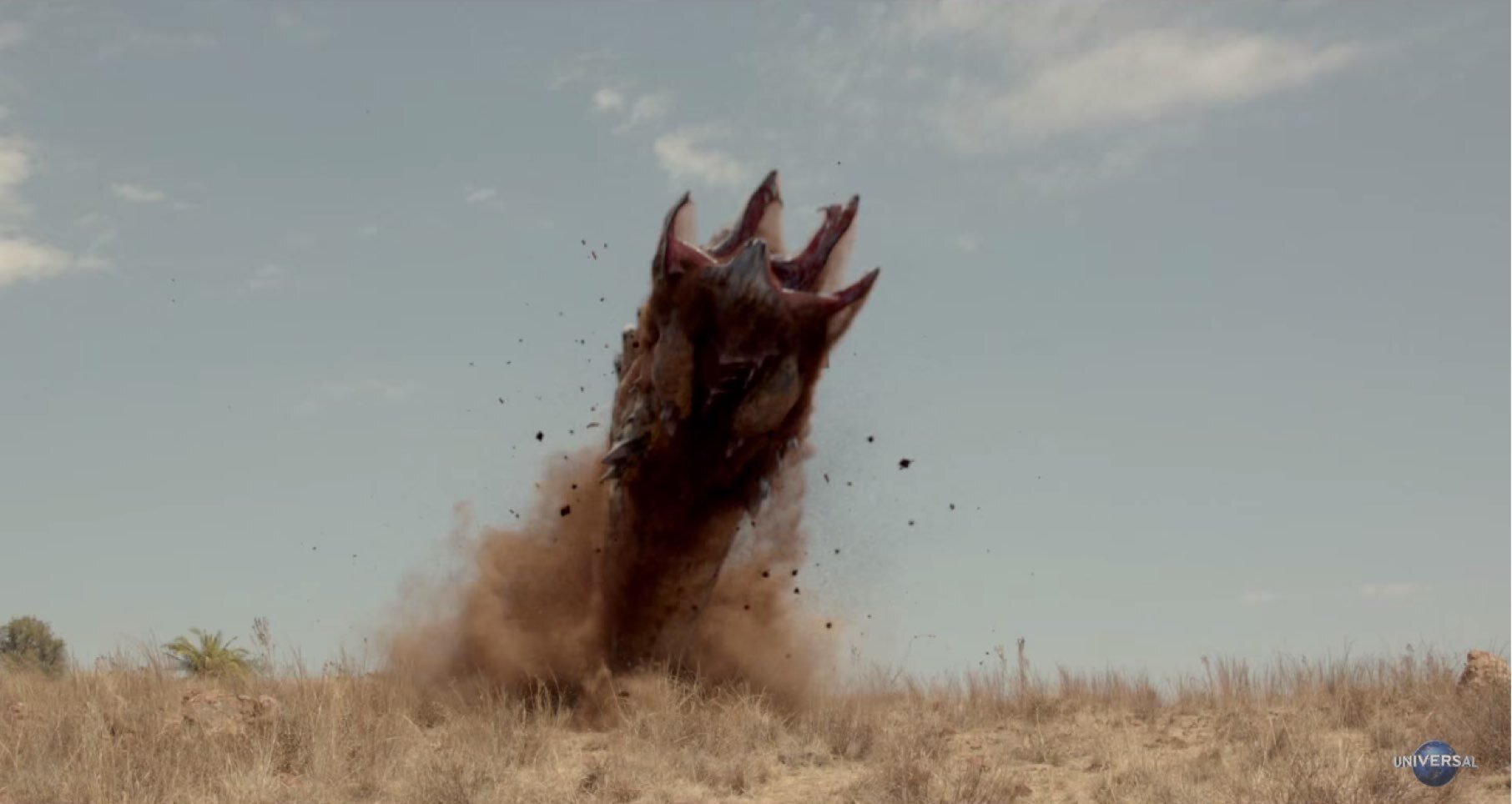Graboid, African

As if the Graboids found in North America were bad enough, it has been recently discovered that a genetic cousin of these creatures lives in the plains of Africa. These are far larger and fiercer (if that is even possible) versions of the Graboid.
Physically, these monsters have thicker hides, which are armor plated, making them exceedingly difficult to harm. And was it mentioned how much larger they are than their North American cousins? This offshoot of the species averages 25’ in length and weighs in at almost 12000 pounds. Like the cousins from the America’s, these creatures have small rock-like projections along their worm-like sinewy body, which helps to propel them under the ground. What has been discovered and is even more disturbing is that these creatures can swim! They can easily burrow into the soil around rivers, lakes and ponds and can travel as fast through the water as they can under the ground. Also, instead of three beak-like mouth parts, these creatures possess five!
The third stage in the Graboid life-cycle, this creature is the egg-layer. Like the African version of the Graboid, this creature is considerably larger and more dangerous than its North American Cousin.
This version of the monster stands at around seven feet in height, and weighs in excess of 1000 pounds. It still possesses the long, powerful legs and wings, but unlike it’s cousin from the America’s, the head is not shaped similar to that of the Graboid. Instead this one has a circular mouth filled with inward pointing teeth.
As aggressive as the American version of this creature is, the African version is even more so. Especially when it comes to anyone entering their territory or threatening the nest.
The creatures lay 2d8 eggs each, and stay with the nest, guarding and protecting it from possible harm, even after the eggs hatch and release the infant Graboids. Anyone foolish enough to try and remove eggs from the nest will be ruthlessly hunted and destroyed. To make matters worse, the creatures will also attack any family or close relations to the violator, as long as they have had a chance to sample the DNA, which they will use to track the offender’s family down. The creatures will kill and consume all members of the offender’s family for revenge, even if they get their eggs back.
As with their cousins, these creatures can use an explosive chemical mixture as a weapon. Any creature caught directly behind the creature (within 45 feet long by 10 foot wide corridor), can be injured or killed as it launches into the air. The chemical reaction is very hot and will easily start flammable materials aflame. This flame will cause 12d6 points of damage. The victim is allowed two saving throws. The first is to dodge out of the way (requiring a save versus energy). If it succeeds, the victim takes only half damage. The second is to avoid catching fire, (not required if the first save succeeds). The save is against energy again and if this fails, the fire will continue to burn for 1d4 rounds, inflicting 4d6 points per round. It can be doused by water or any flame retardant chemical. Also, any flammable material must save versus thermal (see Wisdom from the Wastelands issue 1) or burst into flame.
Mutations: Aberrant form (extra parts, natural weapons, xenomorphism), complete wing development, natural armor, sonic shout, thermal vision, toxic weapon (explosive gas), vision impairment (drawback).
Source: Tremors: Bloodlines (2015)
No. Enc: 1d4
Alignment: Neutral
Movement: 90' (30')
150' (50') Fly
60' (20') Jump
AC: 3
HD: 16
Attacks: 1 Bite or 2 stomps or wing slash or ass blast
Damage: 5d6 or 3d10 / 3d10 or 3d6 or 12d6
Save: L16
Morale: 10
Hoard Class: None
No. Enc: 1d4
Alignment: Neutral
Movement: 180' (60')
AC: 0
HD: 30
Attacks: 1 Bite or special (see description)
Damage: 8d6 or special (see description)
Save: L20
Morale: 10
Hoard Class: None




